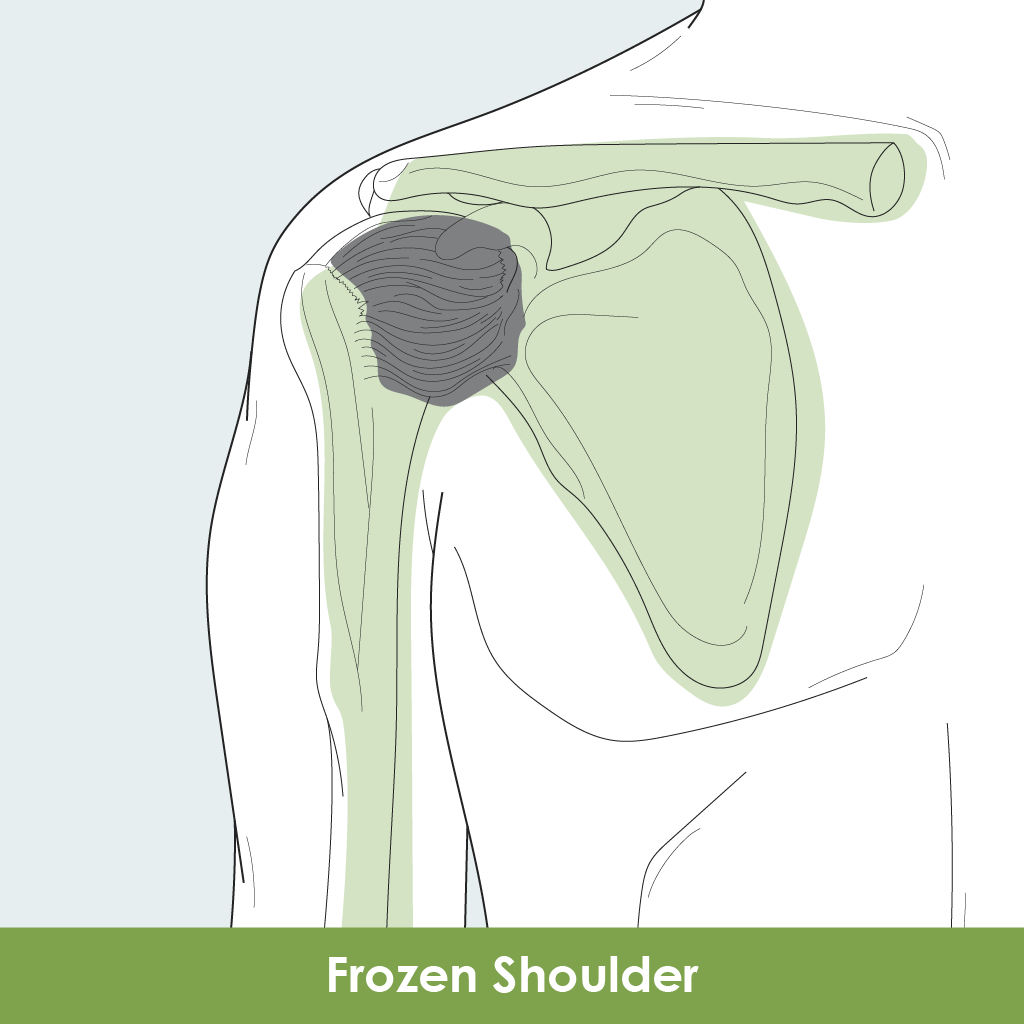Frozen shoulder is a condition that manifests more commonly in individuals who are in the age range of 40+ years old. For younger patients, frozen shoulder can result after trauma to the area due to, for instance, a sports-related injury. This condition can also develop on a gradual basis and worsen over time before the pain becomes alleviated.
Frozen shoulder is more common in women than in men, and the risk of development can be 20% higher for patients with diabetes. The risk of developing frozen shoulder increases if a patient is recovering from medical procedures that prevent the consistent movement of their shoulder or if they are on the road to recovery from another medical condition. Other causes pertain to, for example, ageing, a stroke, a hormonal imbalance, or a weakened immune system.
When a patient’s shoulder capsule is affected, it can cause a limited range of motion. As time progresses, the joint can then be further limited in both active and passive movement. As a result, patients undergo a decreased quality of life when faced with daily activities that may aggravate the pain.
Other effects may pertain to pain experienced during the night; thereby making it difficult for one to rest and negatively affect other possible conditions related to health.
Those who feel pain and stiffness in either one or both of their shoulders are highly encouraged to speak with a health expert at Allevio. A physical exam is used to evaluate range of motion, stage of frozen shoulder, and the viable treatment options. A few of such exams include verbal clinical consultation, magnetic resonance imaging scans (MRIs), ultrasound, and x-rays to better understand the current condition of the patient’s shoulder.
The different phases of frozen shoulder include the freezing, frozen, and the thawing stages. During the first stage, a patient may experience severe pain in their shoulder should they attempt to move it. Over time, the pain may increase in severity while motion in the shoulder becomes limited.
The second stage may reflect symptoms of the first stage, however, with the possibilities of either alleviation or increased stiffness. Pain may be more pronounced should a patient move their affected shoulder as opposed to keeping it still. Daily activities such as getting dressed, combing one’s hair, or lifting groceries can be significantly hindered at this stage.
As for the thawing stage, patients can move their shoulders again, however, although their range of motion may slightly improve, residual pain may persist. The gradual improvements in mobility can make this stage more bearable, despite it taking a significant amount of time.
In terms of treatment methods, there are a variety of them that are available to patients under the care of the Allevio team. Physical therapy, for instance, is a common treatment option that entails pulley therapy, spring therapy, countertraction, and Codman stretches to help patients gain back the rotational motion in their shoulders. Carefully personalized exercises and therapeutic heat or ice packs may be practiced and used at home to further manage pain.
Another treatment option is the acceptance of pain medication from a health expert to help reduce inflammation within the shoulder joints. This is in addition to a local anesthetic, which combats inflammation and swelling, as well as the use of joint distension to aid in the stretching of the shoulder.
As for the manipulation under anesthesia (MUA) treatment option, it can provide pain relief, increased mobility, as well as restore the function of the affected shoulder. The procedure, which is considered non-invasive, can loosen the shoulder’s tightened joint capsule while the patient goes under anesthesia. To break up the scar tissue that limits a patient’s mobility, pressure gets applied on the shoulder joint by a professional chiropractor. Moreover, although uncommon, surgery is another option.
At Allevio, treatment options are commonly done in combination to ensure high efficacy, after receiving consent from patients, and having a thorough consultation with frozen shoulder experts. This article is meant to showcase a few examples of such options. Further resources can be found at allevioclinic.com.

